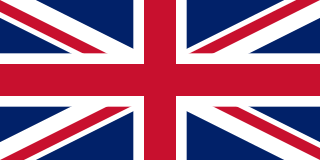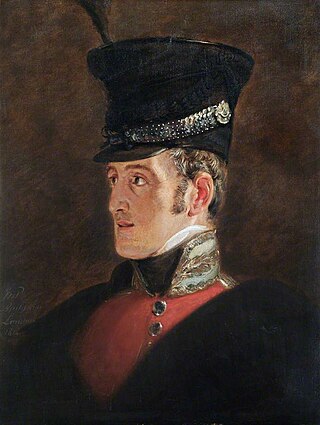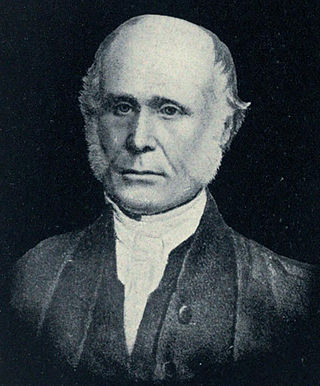Related Research Articles

The War of 1812 was fought by the United States and its allies against the United Kingdom and its allies in North America. It began when the United States declared war on Britain on 18 June 1812. Although peace terms were agreed upon in the December 1814 Treaty of Ghent,the war did not officially end until the peace treaty was ratified by the United States Congress on 17 February 1815.

The Province of Upper Canada was a part of British Canada established in 1791 by the Kingdom of Great Britain,to govern the central third of the lands in British North America,formerly part of the Province of Quebec since 1763. Upper Canada included all of modern-day Southern Ontario and all those areas of Northern Ontario in the Pays d'en Haut which had formed part of New France,essentially the watersheds of the Ottawa River or Lakes Huron and Superior,excluding any lands within the watershed of Hudson Bay. The "upper" prefix in the name reflects its geographic position along the Great Lakes,mostly above the headwaters of the Saint Lawrence River,contrasted with Lower Canada to the northeast.

British North America comprised the colonial territories of the British Empire in North America from 1783 onwards. English colonisation of North America began in the 16th century in Newfoundland,then further south at Roanoke and Jamestown,Virginia,and more substantially with the founding of the Thirteen Colonies along the Atlantic coast of North America.

Niagara-on-the-Lake is a town in Ontario,Canada. It is located on the Niagara Peninsula at the point where the Niagara River meets Lake Ontario,across the river from New York,United States. Niagara-on-the-Lake is in the Niagara Region of Ontario and is the only town in Canada that has a lord mayor. It had a population of 19,088 as of the 2021 Canadian census.
The Battle of York was a War of 1812 battle fought in York,Upper Canada on April 27,1813. An American force,supported by a naval flotilla,landed on the western lakeshore and captured the provincial capital after defeating an outnumbered force of regulars,militia and Ojibwe natives under the command of Major General Roger Hale Sheaffe,the Lieutenant Governor of Upper Canada.

The Family Compact was a small closed group of men who exercised most of the political,economic and judicial power in Upper Canada from the 1810s to the 1840s. It was the Upper Canadian equivalent of the Château Clique in Lower Canada. It was noted for its conservatism and opposition to democracy.

Fort York is an early 19th-century military fortification in the Fort York neighbourhood of Toronto,Ontario,Canada. The fort was used to house members of the British and Canadian militaries,and to defend the entrance of the Toronto Harbour. The fort features stone-lined earthwork walls and eight historical buildings within them,including two blockhouses. The fort forms a part of Fort York National Historic Site,a 16.6 ha (41-acre) site that includes the fort,Garrison Common,military cemeteries,and a visitor centre.
Nathaniel Pitcher was an American lawyer and politician who served as the eighth governor of New York from February 11 to December 31,1828.

Field Marshal John Colborne,1st Baron Seaton,was a British Army officer and colonial governor. After taking part as a junior officer in the Anglo-Russian invasion of Holland,Sir Ralph Abercromby's expedition to Egypt and then the War of the Third Coalition,he served as military secretary to Sir John Moore at the Battle of Corunna. He then commanded the 2nd Battalion of the 66th Regiment of Foot and,later,the 52nd Regiment of Foot at many of the battles of the Peninsular War. At the Battle of Waterloo,Colborne on his own initiative brought the 52nd Regiment of Foot forward,took up a flanking position in relation to the French Imperial Guard and then,after firing repeated volleys into their flank,charged at the Guard so driving them back in disorder.

Peter Buell Porter was an American lawyer,soldier and politician who served as United States Secretary of War from 1828 to 1829.

General Sir James Kempt,was a British Army officer,who served in the Netherlands,Egypt,Italy,the Peninsula,and British North America during the Napoleonic Wars. He led a British brigade at the Battle of Waterloo and later became Governor General of Canada.

Jacob Jennings Brown was known for his victories as an American army officer in the War of 1812,where he reached the rank of general. His successes on the northern border during that war made him a national hero,and he was awarded a Congressional Gold Medal.

The Legislative Assembly of Upper Canada was the elected part of the legislature for the province of Upper Canada,functioning as the lower house in the Parliament of Upper Canada. Its legislative power was subject to veto by the appointed Lieutenant Governor,Executive Council,and Legislative Council.
Joseph Willcocks sometimes spelt Wilcox was a publisher and political figure in Upper Canada. He was elected to the Parliament of Upper Canada in 1807 representing York,1st Lincoln and Haldimand. He was re-elected twice and frequently opposed government policies. He became disillusioned with Upper Canada after a military rule was introduced to Upper Canada during the War of 1812 and defected to the United States. He was mortally shot on September 4,1814 at Fort Erie,and buried in Buffalo,New York.

Sir John Beverley Robinson,1st Baronet,was a lawyer,judge and political figure in Upper Canada. He was considered the leader of the Family Compact,a group of families which effectively controlled the early government of Upper Canada.

Robert Christie was a lawyer,journalist,historian and political figure in Lower Canada and Canada East. Born in Nova Scotia,he moved to Lower Canada as a young man. Elected to the Legislative Assembly of Lower Canada,he generally supported the Parti bureaucrates,or government group. He opposed the union of Lower Canada with Upper Canada,but was elected to the Legislative Assembly of the Province of Canada. As a member,he remained opposed to the union and was an independent,not supporting any particular party. He had a reputation for being hot-headed,but also incorruptible.
The results of the War of 1812,which was fought between the United Kingdom and the United States from 1812 to 1814,included no immediate boundary changes. The main result of the War of 1812 has been over two centuries of peace between the two countries.

Thomas Ridout was a political figure in Upper Canada.

Captain George Taylor Denison was a British-born landowner,military officer and community leader in Upper Canada.

Colonel Sir James Buchanan Macaulay,CB was a lawyer and judge in colonial Canada.
References
- ↑ "Marriages from St. James Church, Toronto, 1800 - 1821" . Retrieved 2020-11-26.
- ↑ "Heward (family) - Archeion". www.archeion.ca. Retrieved 2020-11-26.
- ↑ L. Homfray Irving, Honorary Librarian, Officers of the British Forces in Canada during the War of 1812-1815, Canadian Military Institute, Welland Tribune Print, 1908, page 67-69